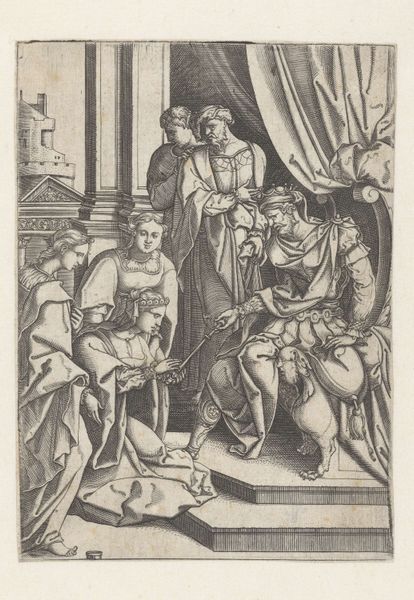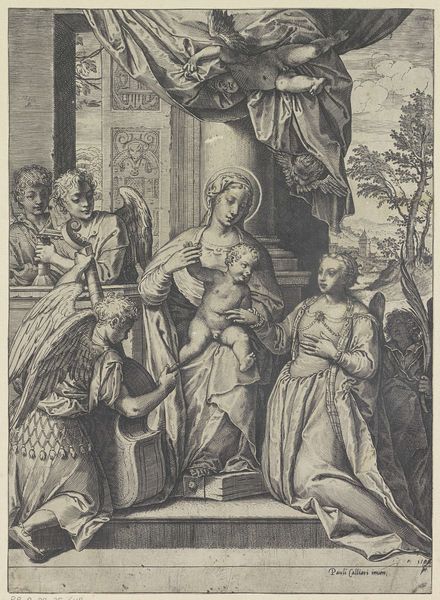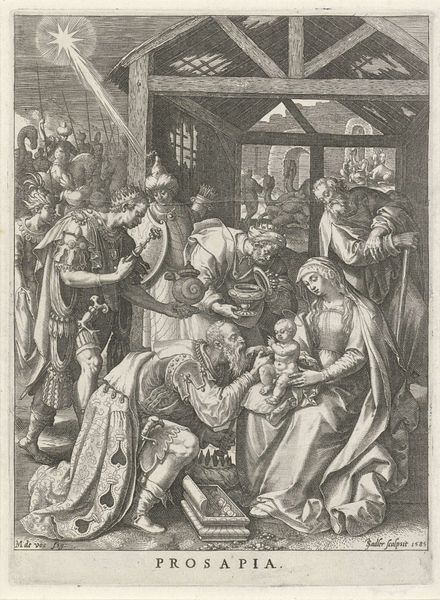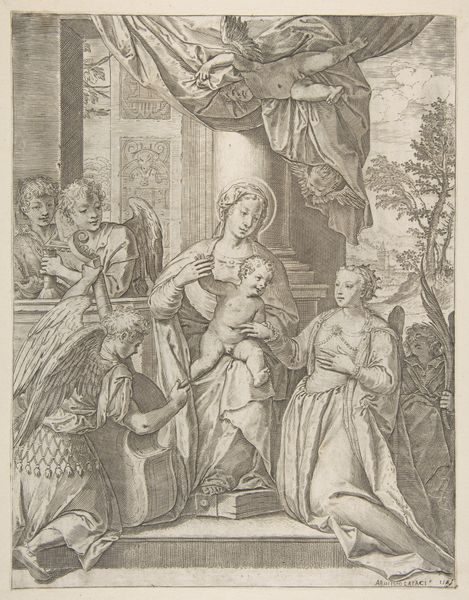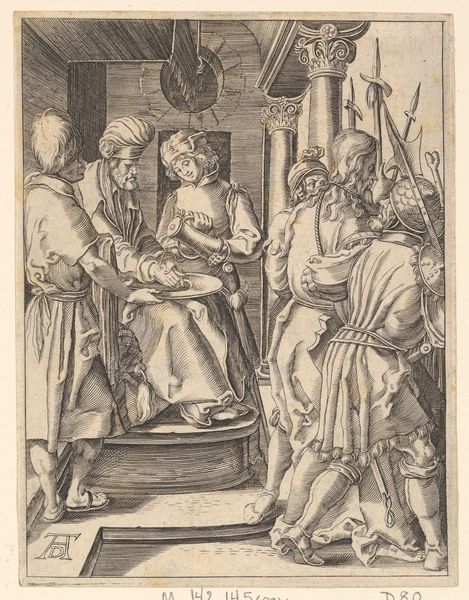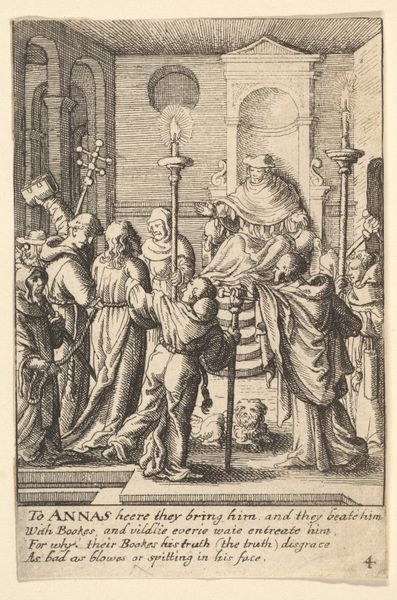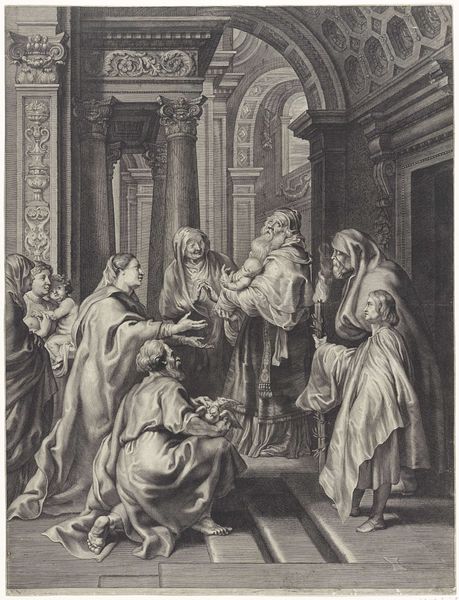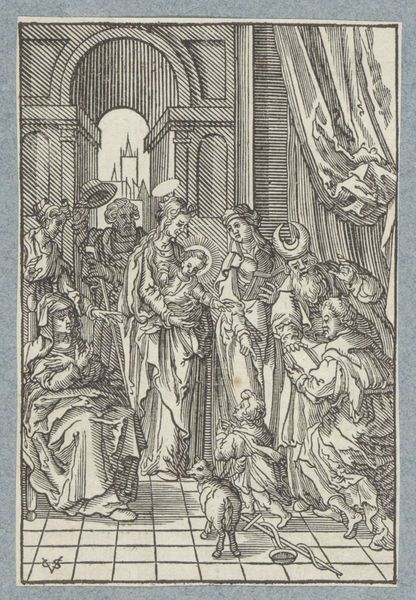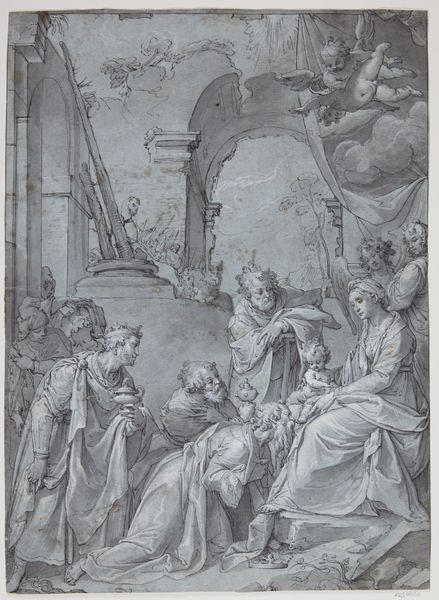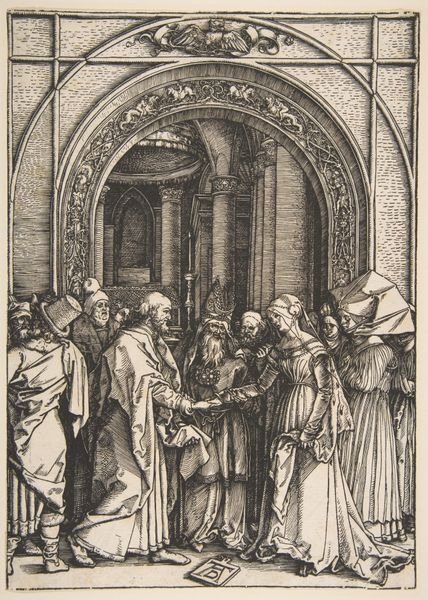
print, engraving
# print
#
figuration
#
history-painting
#
northern-renaissance
#
engraving
#
realism
Dimensions: 497 mm (height) x 375 mm (width) (bladmaal)
Curator: Welcome. Before us is Hendrick Goltzius's "Adoration of the Magi," an engraving from 1594. Editor: My initial reaction is that it's incredibly detailed, almost overwhelmingly so. The texture achieved with line work alone is impressive, lending the scene a solemn, almost weighty atmosphere. Curator: Yes, Goltzius’s command of the burin is exceptional. Notice the precise control over line thickness and density. This manipulation creates subtle tonal variations, evoking the play of light across forms, and is an essential formal consideration. The composition is very controlled with deep architectural perspective. Editor: Absolutely, and within that structure, we see layers of symbolism at work. The Magi, of course, represent the recognition of Christ's divinity by the Gentile world, the exotic gifts highlighting a merging of cultures. Even the crumbling architecture seems to represent the transition from the old order to the new Christian era. Curator: I would agree, but what's key here, editor, is that these symbols achieve the density of the work’s surface by its rendering: this layering and clustering of symbols is echoed and further emphasized by its rendering via line. Editor: Do you mean it’s as though the density of the symbol is also achieved and represented formally? That it’s all one complex? Fascinating. The star in the upper portion of the image also takes my attention, acting as both beacon and symbol, directing the eye and underscoring the moment’s spiritual significance. The faces, too, are quite expressive, a mix of awe, curiosity, and reverence. Curator: Correct. While the narrative is important, focus closely on how Goltzius creates that dynamism through formal qualities. He manipulates space and tone and creates drama that exists both representationally and in itself. It points the way back to the materiality and composition. Editor: It truly speaks to the power of images, especially religious ones, to transmit cultural memory. We bring our own understanding to the reading and interpretation, of course. This print encapsulates a pivotal moment in religious history but also acts as a reminder of cultural and religious exchanges over time. Curator: Indeed. And by giving focused attention to line, the artwork encourages engagement not just with subject, but with its very constitution as an image. Editor: So, in essence, this image gives so much not only symbolically, but by way of what’s put on view—right down to the technique. Curator: Precisely.
Comments
No comments
Be the first to comment and join the conversation on the ultimate creative platform.

